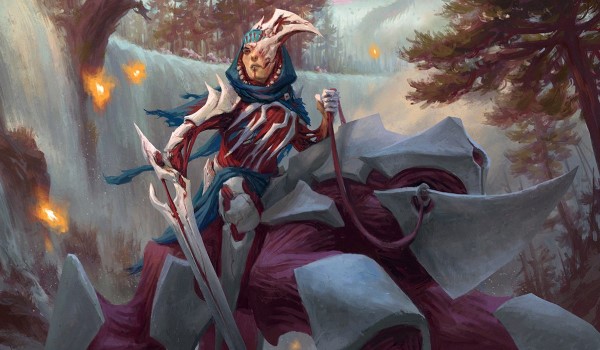Are you a Quiet Speculation member?
If not, now is a perfect time to join up! Our powerful tools, breaking-news analysis, and exclusive Discord channel will make sure you stay up to date and ahead of the curve.
And they're off!
So far March of the Machine (MOM) appears to be a wildly popular format. The culmination of the Phyrexian Saga ends with a final battle between the forces of good and evil, but regardless of this climactic clash, we have a brand-new Limited format, and it is an absolute blast. MOM will no doubt become a fan favorite.
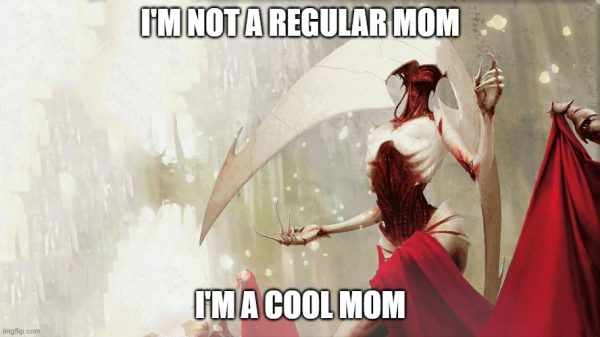
To the delight of many players, this format is a huge change from WOTC's most recent offerings. While BRO and ONE were considered very aggressive, this format is decidedly more midrange. This week, we'll greet the format with a couple of fresh takes and a breakdown of the archetypes.
Flip-Flip-Flipadelphia
In last week's article we discussed the lack of potent early creatures. The flip commons would like a word.
Lower your curve, not your threat density
These four cards have felt excellent. Tarkir Duneshaper // Burnished Dunestomper, Order of the Mirror // Order of the Alabaster Host, Aetherblade Agent, and Pyretic Prankster // Glistening Goremonger eloquently answer the call for a presence in the early-game, as well as being real cards in the mid- and late-game. The early data has admittedly been underwhelming, but these are still the commons we want at the start of our curve.
Bonded Herdbeast // Plated Kilnbeast, the fifth member of the cycle, looks to be solid but replaceable. The other four are premium options for any deck. The bar for a good five-drop is simply higher, and there is no shortage of options there.
Early Thoughts on Battles
Battles complicate Michael Flores's age-old question. Instead of simply asking "who's the beatdown," we now need to know where it's heading as well. That target changes at different states of the game. Our opponent's life total becomes more valuable with scarcity. For example, we might send six damage at a battle when our opponent has twenty life, but we should never do it when they have six.
As a result, if we play battles early, there's a good chance we'll defeat them. If we play them late, they are more often reduced to just the front side's value. In other words, if that one side is not a card we're willing to include, we need to consider other options.
Tempo-Positive Interaction Swings Games
The swings in this format are real. Flipping battles, casting end-step convokes, or just playing a game-warping bomb can rescue games from the brink of finality.
Ephara's Dispersal, Cut Short, and Vanquish the Weak play on this axis. They manage the tempo of the game but typically trade down on resources. Because card advantage is so plentiful in the format, most decks can afford to absorb the loss. But snowballed advantages are harder to overcome with raw value alone. These cards help with that.
The card that has most outperformed expectations has been Wicked Slumber. Casting this with zero mana up is a beating. Slumber is potently templated, providing an option to put both stun counters on a single creature. Whether it helps us defeat a battle, push damage, or buy time, this card can wreck tight games.
Blue Is the Best Color
Four of the top five two-color decks, according to 17lands.com, feature blue. The color plays host to the format's most powerful keyword, convoke, and most supported archetype, UW Knights. Furthermore, blue has access to strong tempo plays at all rarities, while still boasting cards that can generate advantage over a long game.
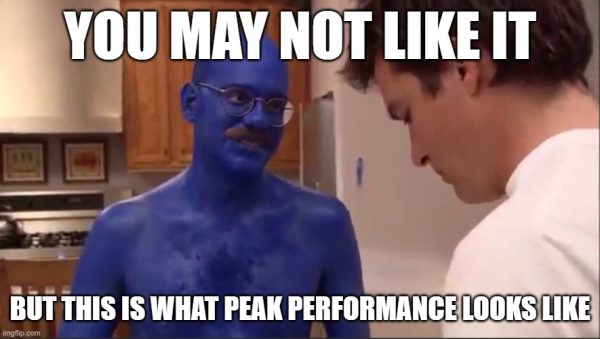
Moreover, blue does all the things that are important in this format. It has strong synergies, can play a long game while still adding to the board, and interacts in a way that helps control the tempo of the game. Check out the current top commons in the format, according to GIH WR%. There are four blue spells, three removal spells, and one outlier.
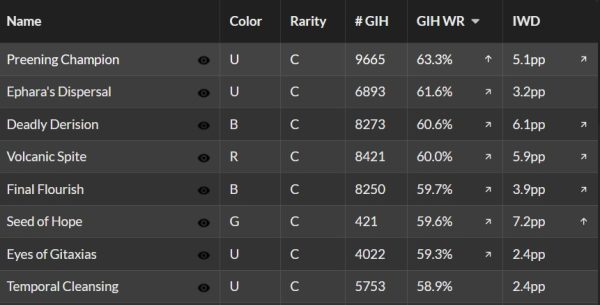
Seed of Hope has the smallest sample size, by far. It's a cantrip that feeds the graveyard, gains life, and carries a minor risk of disaster. The most likely conclusion? It's seeing disproportionate play in the hands of stronger players. But if that's the case, why does it have such an outlandish IWD?
Knights Is the Most Supported Archetype
Knights looks to be the most supported archetype in the format. It's deep at common. The synergies in this deck matter. Swordsworn Cavalier is a buzzsaw in the early game. Until we get to four mana, very few creatures in the format can block a 3/1 first strike profitably.
Chivalry alive and well
This deck also has the ability to maximize convoke cards, because it already creates a vigilant board presence. This is an aggressive deck that can go late. However, with all the bombs in the format, an Artistic Refusal, while off-plan, can go a long way. If our Knights deck looks like it might need to pivot into a longer game, this is a worthy consideration.
Convokin's Broken
The returning convoke mechanic is a lot better in this set than it was in Guilds of Ravnica. Convoking spells feels like a completely different mechanic than convoking creatures. The mechanic thrives in MOM because we already want to build out our board and need to make tempo positive plays. The following cards have all exceeded expectations.
No joke convoke
If we're still seeing these cards go late, we should take advantage of it. However, if we are in this archetype, or if we're simply playing convoke cards, we need to build out an early board. Ral's Reinforcements is a fine enabler, but the nature of the format leads to wide, complicated boards. Turns out that's pretty good for convoke. Who knew? Even cards like Shatter the Source and Astral Wingspan have been strong.
UR Convoke is not as thematic as Wizards would have us believe. Convoke for the sake of convoke. We don't need to overcommit to keyword-driven synergies.
UB: Not Just Run of the Mill
UB is supposedly a Mill deck. Tenured Oilcaster and Halo-Charged Skaab aren't very convincing though. This is a slower, value-based deck that wants to get ahead on resources. Fortunately, that's what this format is all about. UB currently has the highest win rate of all color combinations.
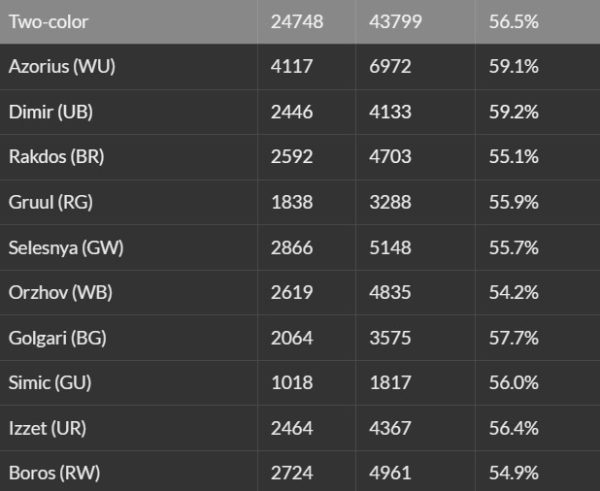
This color combination has some of the most powerful battles in the form of Invasion of Ulgrotha // Grandmother Ravi Sengir, Invasion of Amonkhet // Lazotep Convert, and Invasion of Eldraine // Prickle Faeries. We want to win a war of attrition, so of course UB is a solid place to be. Breach the Multiverse might look too expensive, but it's a battlecruiser trump card.
This deck is powerful, but really gets its juice from cards at higher rarities. Blue and black both have great commons, but there's an old adage: the longer the game goes, the more powerful you need your deck to be. UB has the tools to win any slugfest.
RG: Battles
Pressure the battles early, dominate the battlefield. It's strange to see an aggressive deck ready to play a long game. This deck has a hellbent problem. It's asking us to do something we don't typically benefit from doing. RW Samurais in Kamigawa: Neon Dynasty had the same issue. Aggressive decks don't want to attack with only one creature. They also don't want to take detours before shortening the game. This deck faces an interesting crossroads on every attack.
However, to get to those battles, we have some tools. War Historian, War-Trained Slasher, and Thrashing Frontliner do a nice job applying pressure to battles. The jury is still out on Onakke Javelineer and Portent Tracker. While ramp and reach are valuable, they pressure battles slowly. It might be a liability while other decks are doing more by building out a battlefield and convoking.
The biggest concern for this deck is that it doesn't necessarily have the tools to play from behind. This deck wants to snowball its advantage by having a big board presence and adding to it with each battle it defeats. However, if it stumbles early, or hits a road block in the form of one of MOM's extremely powerful rares or mythics, it might have trouble. While we shouldn't avoid playing RG, we should have a good reason to navigate ourselves towards these colors.
GW: Counters
GW Counters looks very solid. There's nice overlap between green's ability to go after battles and the backup mechanic, which helps accelerate the process. This deck also wants to bully the board and defeat battles. Plus, the uncommon payoffs are all very strong.
Outpacing opponents
The backup mechanic makes it much easier to find counters, which can sometimes be a bottleneck for this archetype. To further assist this issue, the incubate mechanic also uses counters, so there's definitely synergies to be had there.
Just about every white deck is going to want Angelic Intervention, but this one makes the best use of it. It's a powerful effect whenever it's printed. Getting a bonus off of the counter is just gravy. If our GW deck is creature-heavy, we could realistically be happy playing three of these. The commons for GW are shallow, but if we have the strong payoffs, we can get more out of them.
Abzan: Phyrexian/Incubate
GB and WB are technically different archetypes, but they look and play very similarly. These decks want to bog down the board with incubate tokens, soften the board with black's great depth of removal spells, and grind out games. The format has a couple of enchantments with incubate that are all excellent in these decks, even if splashed.
The eggs got legs
Green and white both shore up black's early game with two-drop creatures. Black provides interaction to help keep the game from getting out of hand. The incubate cards are how we get ahead. It's a simple recipe, but there are some strong build-arounds at uncommon that can help us in that third stage.
The Phyrexian tokens are surprisingly big, and once they start stacking keywords from the enchantments, they take control of a game.
UG: Transform/Splash
This archetype does not seem particularly well-supported. The signpost uncommon is clearly built with the archetype in mind, but even the UG Battle looks like they just stapled the "double-face" language onto it.
This is the type of archetype we might find ourselves in if both colors are open, but the synergies are underwhelming. There is enough power in the format for any deck to seem viable, as long as the colors are open. We already want to be blue; however, from a theory-crafting perspective, green's fight-style removal isn't particularly well-supported by blue's cards.
Splashing wisely, though, can turn an open UG pile into a deadly deck. UG and UB are currently the best two decks that splash a third color, and amongst three-color decks, the best two both include blue and green. UG typically slides into a multi-colored deck, and this format supports this strategy. Of note, there is a big difference between the good mana-fixers and the bad ones. The best one is Invasion of Zendikar // Awakened Skyclave.
RW: Backup
Backup is spread equally across the Naya shard. However, GW seems to profit the most, as multiple cards care about +1/+1 counters in those colors. RW obviously has access to the white cards that care about counters, but red is a strange bedfellow for this gameplan. Scrappy Bruiser lets us reset our backup cards. Temporarily gifting Karthus Depthguard double-strike or flying is a nightmare for opponents. However, most of the cards in this format don't need additional support to be good.
This deck has to decide if it's a Kor Halberd deck or an Inspired Charge deck. The equipment has an excellent rate, but it's unclear if this will be a good format for equipment. It moves around for one mana, and vigilance matters when we're fighting for battles. If we have multiple Ral's Reinforcements and Knight of the New Coalition, we will want to optimize the instant for an alpha strike, and the RW battle Invasion of Kylem // Valor's Reach Tag Team plays to that strategy.
RB: Sacrifice
RB sacrifice usually needs to hit three checkpoints to work. The steal effect, the sacrifice effects, and the ability to generate fodder.
The Threaten effect is at uncommon, which is a knock against the deck. That being said, Furnace Reins has incredible stats in the archetype, where it boasts a 61.1% GIH WR and an outstanding 7.7% IWD.
There are a number of sacrifice outlets in the format at both common and uncommon. Akki Scrapchomper lets us play a longer, value-oriented game by sacrificing lands, but it cannot sacrifice non-artifact creatures. Be careful if this is how you plan on finishing off a Threaten-ed creature. There are plenty of other options though.
Sac outlets
Scorn-Blade Berserker has also impressed, though frequently, it's best to play it on one and get the free damage before cycling it. This format isn't as fast as others, and getting the Berserker down early can represent some valuable damage. The quantity of outlets is a relative strength when comparing this archetype to other formats.
There are some solid options for sacrifice fodder as well. Ral's Reinforcements, Ichor Drinker and even Nezumi's Informant are reasonable options here.
Like all red decks, this will be a great home for Pyretic Prankster. Nezumi Freewheeler has been an all-star in small sample size. It helps this deck grind. Together, these two let this deck play a slower game. It does this surprisingly well, though we definitely need to put our opponents on a clock.
Add some removal and a bomb, and you have a pretty strong iteration of a timeless classic.
Some Perspective
MOM appears to be a pretty complex format. There's a lot going on, and the cards are extremely powerful (though it does feel like I've been saying that a lot in recent months). The early data will definitely shift, but the current information represents a reasonable sample size. Don't be quick to dismiss it.
Are you enjoying March of the Machine as much as I am? What archetypes are working best for you? And what commons have I understold? Let me know in the comments. Until then, I'll be drafting!


